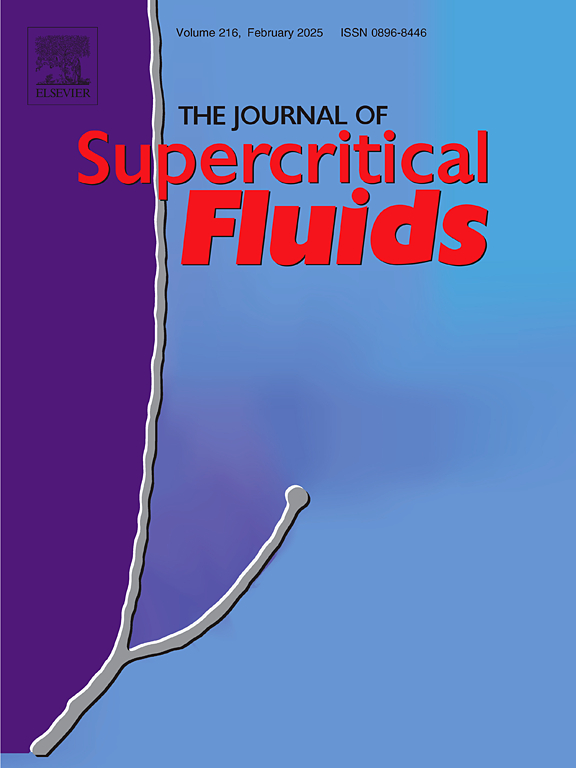超细金属氧化物连续流水热合成的精度控制
IF 4.4
3区 工程技术
Q2 CHEMISTRY, PHYSICAL
引用次数: 0
摘要
近年来,在水热条件下通过有机-无机反应合成了尺寸为1.5 nm的超小金属氧化物纳米颗粒。采用流动反应器改变反应时间,实现了对颗粒大小的精确控制。连续流水热合成方法在探索金属氧化物新特性方面具有广阔的应用前景。在本研究中,通过改变工艺条件和材料,如有机改性剂的链长、核心颗粒种类、金属前驱体浓度和流动动力学,研究了有机改性超小型金属氧化物的生长行为。本研究的重点是在初始快速生长阶段,范围从40 ms到10 s,以实现对超小型金属氧化物(1-5 nm)的精确控制。结果表明,改变有机改性剂的核心颗粒组成和链长对初始生长速率有显著影响。此外,较高的浓度和流速有利于获得更小的颗粒,适合大规模合成。本研究证明了连续流水热法在各种超小型金属氧化物纳米颗粒的精确合成中的适用性,同时对超小型金属氧化物的非常规聚变生长机制有了更深入的了解。本文章由计算机程序翻译,如有差异,请以英文原文为准。
Precision control of ultrasmall metal oxides under continuous flow hydrothermal synthesis
Recently, ultrasmall metal oxide nanoparticles from 1.5 nm in size were synthesized by organic–inorganic reactions under hydrothermal conditions. Precise control of the particle size was achieved by changing the reaction time using a flow reactor. The continuous flow hydrothermal synthesis method is highly promising for exploring new features of metal oxides. In this study, the growth behavior of organically modified ultrasmall metal oxides is studied by varying the process conditions and materials, such as the chain length of the organic modifier, core particle species, metal precursor concentration, and flow dynamics. This study focuses on the initial rapid growth stage, ranging from 40 ms to 10 s, to achieve the precise control of ultrasmall metal oxides (1–5 nm). The results show that varying the core particle compositions and chain length of organic modifiers significantly affect the initial growth rate. Furthermore, higher concentrations and flow rates are advantageous for obtaining smaller particles and are suitable for large-scale synthesis. This study proves the applicability of the continuous flow hydrothermal methodology for the precise synthesis of various ultrasmall metal oxide nanoparticles, while providing deeper understanding of the unconventional fusion growth mechanism of ultrasmall metal oxides.
求助全文
通过发布文献求助,成功后即可免费获取论文全文。
去求助
来源期刊

Journal of Supercritical Fluids
工程技术-工程:化工
CiteScore
7.60
自引率
10.30%
发文量
236
审稿时长
56 days
期刊介绍:
The Journal of Supercritical Fluids is an international journal devoted to the fundamental and applied aspects of supercritical fluids and processes. Its aim is to provide a focused platform for academic and industrial researchers to report their findings and to have ready access to the advances in this rapidly growing field. Its coverage is multidisciplinary and includes both basic and applied topics.
Thermodynamics and phase equilibria, reaction kinetics and rate processes, thermal and transport properties, and all topics related to processing such as separations (extraction, fractionation, purification, chromatography) nucleation and impregnation are within the scope. Accounts of specific engineering applications such as those encountered in food, fuel, natural products, minerals, pharmaceuticals and polymer industries are included. Topics related to high pressure equipment design, analytical techniques, sensors, and process control methodologies are also within the scope of the journal.
 求助内容:
求助内容: 应助结果提醒方式:
应助结果提醒方式:


